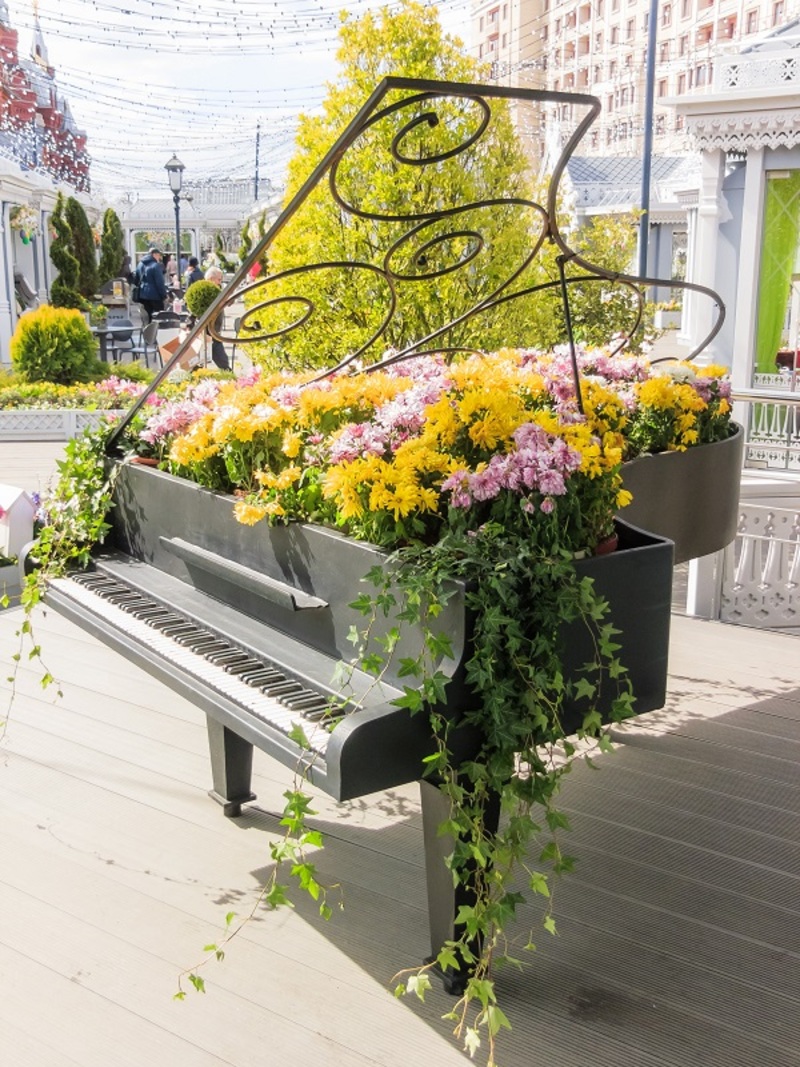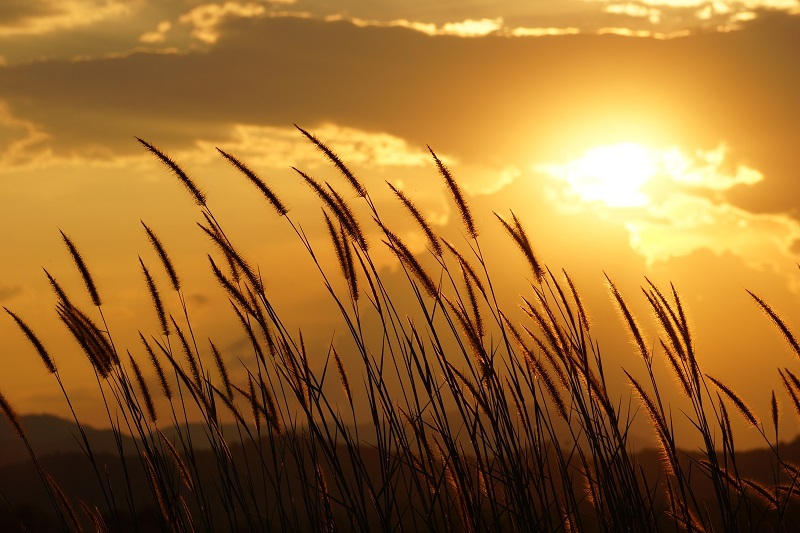12 Everlasting Flowers to Enrich Your Garden Oasis
Posted on 22/08/2025
12 Everlasting Flowers to Enrich Your Garden Oasis
Imagine strolling through your garden, surrounded by vibrant colors and captivating blooms that never seem to fade. This dream can become a reality by choosing the right selection of everlasting flowers. These hardy, long-lasting flowers bring not only beauty but also timeless charm to any outdoor space. In this article, you'll discover twelve remarkable plants that will help you create a garden oasis overflowing with enduring splendor.
Why Choose Everlasting Flowers for Your Garden?
The term "everlasting flowers" refers to flowers renowned for their outstanding longevity--either as fresh garden residents or when cut and dried for indoor displays. Whether you're aiming for a low-maintenance garden sanctuary or seeking sustainable florals for year-round decor, these long-lasting blooms are ideal. Their impressive resilience means they stay beautiful with minimal care, making them perfect for busy gardeners, eco-conscious enthusiasts, and everyone in between.
Benefits of Everlasting Flowers
- Extended Blooms: Keep your garden colorful longer into the season.
- Low Maintenance: Most of these varieties require minimal upkeep once established.
- Perfect for Cutting: Many everlasting flowers are excellent for bouquets and dried floral crafts.
- Wildlife Friendly: These blooms often attract pollinators like bees and butterflies.
- Resistant to Pests and Diseases: Most varieties are exceptionally hardy.

12 Everlasting Flowers to Beautify Your Outdoor Refuge
Ready to infuse your home landscape with enduring color and texture? Here are the top 12 everlasting flowers every gardener should consider:
1. Lavender (Lavandula)
One of the most beloved everlasting plants, lavender is prized for its soothing fragrance, stunning purple spikes, and forgiving nature. This Mediterranean native thrives in well-drained, sunny garden beds.
- Blooms: Summer
- Care: Prefers full sun and sandy, alkaline soil.
- Dried Use: Retains color and scent for months; ideal for sachets and arrangements.
2. Strawflower (Helichrysum bracteatum)
Known for their papery petals that maintain their vibrancy long after being cut, strawflowers are some of the most popular everlasting blooms for dried bouquets and crafts.
- Blooms: Late spring through fall
- Care: Grow in full sun with good air circulation.
- Dried Use: Petals keep intense color and shape when air dried.
3. Statice (Limonium sinuatum)
Statice offers clouds of small, colorful blossoms atop sturdy stems. Its flowers keep their intense hues and structure--making it a top long-lasting flower for fresh and dried arrangements.
- Blooms: Summer
- Care: Sun-loving and drought tolerant once established.
- Dried Use: Retains color and texture for years.
4. Globe Amaranth (Gomphrena globosa)
This charming annual wows with globe-shaped, clover-like heads in purple, pink, and white. Globe amaranth retains its shape and brightness after drying, ensuring lasting beauty in your garden and home.
- Blooms: Midsummer to frost
- Care: Grows well in hot, sunny locations and tolerates drought.
- Dried Use: Preserves color and form for months when dried upright.
5. Yarrow (Achillea millefolium)
With its feathery foliage and wide flower heads, yarrow brings a wild, airy charm to the garden. Its clusters come in shades of yellow, red, and pink and can be easily dried for enduring arrangements.
- Blooms: Early summer through fall
- Care: Thrives in poor, dry soils with full sun.
- Dried Use: Holds both color and shape well after drying.
6. Celosia (Celosia argentea)
Whether in plumed or crested form, celosia dazzles with vibrant colors and unusual textures. This heat-loving flower is both a garden showstopper and a favorite for dried designs.
- Blooms: Summer to frost
- Care: Plant in full sun, water regularly for biggest blooms.
- Dried Use: Holds shape, color, and unique textures beautifully.
7. Baby's Breath (Gypsophila paniculata)
Best known as a classic bouquet filler, baby's breath adds delicate, cloud-like beauty to borders and cut flower projects. The tiny white or pink blossoms last remarkably well when dried or pressed.
- Blooms: Summer
- Care: Prefers alkaline, well-drained soil and full sun.
- Dried Use: Flowers and stems dry easily and maintain delicate charm for months.
8. Chinese Lantern (Physalis alkekengi)
Noted for its striking, lantern-shaped seed pods, Chinese lantern infuses gardens and dried arrangements with bold orange-red color in late summer and fall. The papery pods persist for months after harvest.
- Blooms: Late summer
- Care: Plant in full sun or partial shade; can spread quickly--contain roots if necessary.
- Dried Use: Pods become even more vibrant as they dry.
9. Sea Holly (Eryngium)
With architectural, spiny blue blooms and silver stems, sea holly brings unique texture to garden beds and everlasting bouquets. The metallic gleam of its flowers endures when dried.
- Blooms: Early to midsummer
- Care: Tough plant; thrives in sandy, dry soil and full sun.
- Dried Use: Retains color and spiky structure for years.
10. Coneflower (Echinacea)
A pollinator magnet with daisy-like flowers, coneflower comes in shades from purple to gold. Its seed heads add winter interest and can be used in dried floral crafts.
- Blooms: Midsummer to autumn
- Care: Grows best in full sun and well-drained soil.
- Dried Use: Cone-shaped seed heads stay attractive after drying.
11. Hydrangea (Hydrangea macrophylla)
Famed for their luxurious flower clusters, hydrangeas make a dramatic statement in the garden and as everlasting blooms. Varieties like 'Endless Summer' can even bloom repeatedly.
- Blooms: Summer to early autumn
- Care: Moist, well-drained soil; partial sun to light shade.
- Dried Use: Blooms are ideal for dry arrangements; retain soft color.
12. Russian Sage (Perovskia atriplicifolia)
This rugged perennial is beloved for silvery foliage and clouds of aromatic lavender-blue flowers. Russian sage adds structure and subtle color to your garden oasis well into fall.
- Blooms: Midsummer to autumn
- Care: Tolerates drought and poor soils; plant in full sun.
- Dried Use: Leaves and flower sprays dry well, retaining pleasant aroma.
How to Get the Most from Your Everlasting Blooms
To ensure a steady parade of everlasting flowers in your garden oasis, consider these best practices:
- Staggered Planting: Choose varieties with different bloom times for continual color.
- Optimal Placement: Most everlasting plants prefer full sun and well-draining soil.
- Water Wisely: Overwatering can reduce resilience. Let soil dry between waterings for drought-hardy types.
- Deadhead Regularly: Removing faded blooms encourages more flowers and keeps plants healthy.
- Harvesting: For dried flowers, cut stems in mid-morning after dew has dried. Hang bunches upside down in a dark, airy place.
Design Tips for a Timeless Garden Oasis
Everlasting blooms are at their most enchanting when artfully arranged within your landscape. Here are a few design tips for maximizing their impact:
- Layer Heights: Combine tall upright forms like Russian sage or hydrangea with lower-growing globe amaranths and statice for visual interest.
- Mix Colors and Textures: Pair soft, feathery yarrow with the structured forms of sea holly and celosia for a dynamic effect.
- Seasonal Successions: Plan for overlapping bloom times to keep beds lively from spring through fall.
- Create Cut Flower Zones: Dedicate a small patch for growing everlasting varieties specifically for indoor arrangements or drying projects.

Frequently Asked Questions About Everlasting Flowers
What is the difference between everlasting and annual flowers?
Everlasting flowers often refer to long-lasting perennial plants, though many annuals (like strawflower and celosia) also belong to this group due to their lasting beauty post-harvest. The key feature is their ability to retain color and shape, especially when dried.
How do I dry everlasting flowers?
Harvest stems when blooms are at their peak. Remove leaves, gather in bunches, and hang them upside down in a cool, dark, well-ventilated area. Avoid humidity and direct sunlight to prevent fading or mildew.
Are everlasting flowers good for pollinators?
Many everlasting garden flowers are highly attractive to bees, butterflies, and beneficial insects, aiding in the health of the wider ecosystem.
Can everlasting flowers survive winter?
Perennial varieties (like lavender, Russian sage, and yarrow) typically have good cold tolerance. In colder regions, mulch and proper placement help ensure their survival.
Create a Vibrant, Resilient Garden Oasis with Everlasting Flowers
Cultivating a garden filled with everlasting floral beauty is both rewarding and practical. These timeless blooms enrich your landscape, provide lasting bouquets, and require little fuss--allowing you to enjoy more time soaking up your outdoor sanctuary.
Whether you're growing for personal enjoyment, pollinator health, or indoor arrangements, these 12 everlasting flowers are sure to deliver year after year. Experiment with planting combinations, embrace their low-maintenance character, and savor the enduring charm they bring to your garden oasis.
Take the first step today--transform your landscape into a haven of perpetual color and happiness. Let these everlasting flowers be the heart of your vibrant, serene garden escape!







